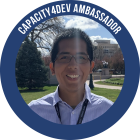22 May is International Biodiversity Day, a date created to raise awareness about the problems affecting biodiversity. Despite scientific and technological developments worldwide, we cannot deny that human activity has impacted the loss of different species and unique ecosystems. Action is needed to address this threat, which affects both present and future generations.
This day's origins go back to the adoption of the Convention on Biological Diversity (CBD), an international instrument ratified by 196 countries in 1993. The CBD also represents a key opportunity to achieve a sustainable future through biodiversity conservation.
In 2024, the theme is “Be part of the Plan." It addresses the commitment and encourages the collaboration and involvement of all actors (states, local communities, indigenous peoples, companies, and organisations, among others) for the implementation of the Kumming-Montreal Global Biodiversity Framework (or Biodiversity Plan) with its 4 Goals and 23 Global Targets. The latter include the restoration of 30% of degraded terrestrial, inland water, coastal and marine ecosystems.
Youth participation in favour of biodiversity
Together with other organisations, the Global Youth Biodiversity Network (GYBN) works to engage young people in biodiversity protection, and, specifically, it represents their voices in the CBD negotiations. The GYBN seeks real transformational change to reinvent our systems in a sustainable way and ensure a future with hope and harmony with nature. To achieve this, GYBN builds capacity and promotes youth empowerment. It also runs campaigns, participates in congresses and conferences, and organises youth consultation processes to develop positions and policies that prioritise the participation of local communities and indigenous peoples in the defence of their ecosystems. In addition, it connects individuals and youth organisations to build a global coalition to stop biodiversity loss.

An example is the work done by GYBN's Peru Chapter. Here, a project is being developed promoting the integration of youth in the National Biodiversity Strategies and their Action Plan. The hope is to obtain a policy brief which includes the priorities of Peruvian youth to be disseminated and advocated for at the Conference of Parties to the Convention on Biological Diversity (COP-16), between 21 October and 1 November 2024 in Colombia. In addition, the chapter is participating in the organisation of the Local Youth Conference on Climate Change in Peru (LCOY), which will aim to obtain the National Climate Declaration of Peruvian Youth containing the vision of young people from all over the country with respect to the problem of climate change, including their main proposals and concerns.
COP-16 and its impact on the Latin American region
According to studies by the International Union for Conservation of Nature (IUCN), more than 41 000 of the more than 147 500 species registered on the Red List are in danger of extinction. The most at-risk species are cycads (a type of plant), with 80%; sharks and rays, with 40%; and mammals, with 30%.
According to the Living Planet Index, developed by the World Wildlife Fund (WWF) to measure animal diversity, Latin America is the region that has experienced the largest decline in animal populations since 1970, with a 94% decrease in average wildlife population size. This is despite being home to countries with the highest biodiversity in the world, such as Brazil and Colombia, which share part of the Amazon, a refuge for countless species of plants, animals and insects.
One of the objectives of COP-16 is to align the National Biodiversity Strategies and Action Plans (NBSAPS) with the Biodiversity Plan mentioned at the beginning. On the other hand, COP-16 will also serve to encourage resource mobilisation, capacity-building and foster inter-institutional cooperation for the implementation of the Plan.
How can we get young people more involved in biodiversity protection?
Here are some tips and arguments which can be used by international cooperation initiatives to activate young people on the conservation of our ecosystems and species:
-
Advocate for a change in purchasing habits. Whenever possible, try to organise campaigns and activities focusing on convincing consumers to choose to buy fewer consumer goods that have no or minimal impact on biodiversity and the environment in general.
-
Environmental education. Educating future generations, such as children and young people, about biodiversity, ecosystem protection, risks, and opportunities brings positive results in the long term. It creates a link with the environment from an early age and provides them with the necessary knowledge so they can be part of its care.
-
Local support. Supporting smallholder farmers helps provide them with more resources to cope with climate change and ensure the protection of biodiversity. It also contributes to the growth of the local economy and the development of chemical-free products through efficient integrated pest management.
-
Get involved. Participate in different spaces in your community to develop environmental policies and action plans. You can also join different networks and collectives that advocate for the respect of human rights and the environment to take a more active role in biodiversity conservation. These include Youngo and Global Landscapes Forum, among others.
Final reflections
As the world progresses economically and technologically, we need to become more aware of the impact we have on our environment, ecosystems and the living beings with whom we coexist on this planet.
Otherwise, we will be on a path of no return towards the mass extinction of life on Earth. Biodiversity is crucial in the balance of ecosystems, access to natural resources, and human well-being. As international cooperation professionals, we need to guarantee that the policies and projects we implement are effective and that they include young people who have a very important role to play as ambassadors for the cause.
Photo credit: The Global Youth Biodiversity Network (GYBN)
Sources:



(1)
Log in with your EU Login account to post or comment on the platform.
This is very good. Kudos to the Peruvian youths!